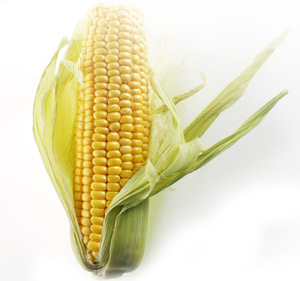|
|
Corn allergy and intolerance |
|
There are very few published reports of allergic reactions resulting from eating corn and little evidence to suggest that corn is a food that is likely to trigger severe or anaphylactic reactions. Only a few studies have tried to identify corn allergens. Indeed, some allergists have questioned whether corn allergy exists at all. (1) In the 2006 study (5) nine participants reacted to corn in a double-blind placebo-controlled food challenge (DBPCFC) and reported the following symptoms: Erythema (reddening, flushing) In another study, symptoms reported (3) include: A 2008 study (6) reported that 48% of the 27 patients enrolled in the study reacted to corn in DBPCFC. If two or more symptoms occurred, the subject was deemed at risk for anaphylaxis. Exercise-induced anaphylaxis after consumption of corn also has been reported. (7) Delayed reactions In addition to the immediate-onset symptoms delayed reactions to corn seem relatively common. These become evident when corn is eliminated from the diet and the symptoms resolve. These people will have tested negative in corn-specific IgE tests in skin and blood and will have failed to react to challenge tests designed to reveal immediate-onset symptoms. However, when corn is challenged over a 2- to 4-day period, symptoms appear. This pattern of reactivity is very similar to that reported for “cell-mediated” allergy to wheat. Because the mechanism of reactivity is currently unknown, some practitioners refer to these delayed responses as corn intolerance rather than allergy.(a) The symptoms reported in this type of delayed response to corn are diverse and include: Often such symptoms are considered to be subjective and may be chronic in nature until an exclusion diet reveals the cause of the problem. The possibility of corn being a trigger for these types of symptoms is rarely considered, especially when the diagnosis is so difficult. Hopefully future research will reveal the mechanism responsible and evidence-based research will lead to more individuals with corn allergies being correctly identified and helped in the future. (a) Radcliffe M. Consultant in Allergy Medicine and Clinical Research Fellow in Allergy, Royal Free NHS Trust and University of Southampton. “Corn allergy and intolerance—the consultant’s view.” E-mail communication, June 2011. It is not uncommon for a person who is allergic to wheat and other cereal grains to also be allergic to corn. The common allergen or allergens in these grains remain to be identified. In the meantime, those individuals allergic to cereal grains need to avoid several grains, including gluten-containing grains and corn, to achieve remission of their symptoms. LTPs are proteins in many foods that are often responsible for the most significant allergies. They are generally heat-resistant, and their allergenicity is unaffected by cooking. They can also survive stomach acid and digestive enzymes and thus can trigger an immunological response when they encounter immune cells in the intestines. Another group of researchers found a 50-kD protein that was resistant to both heating and peptic/pancreatic digestion and was thought likely to be an important allergen in triggering corn allergy. (2) Interestingly, the researchers who reported the existence of the 9-kD corn allergen found that the corn LTP cross-reacts completely with LTPs in rice and peach, but not with those in wheat or barley. (8) This is further evidence that foods in the same botanic family rarely cross-react, but proteins that are structurally identical in unrelated plants may trigger allergy in a person who is sensitized to only one of them. A 16-kD protein identified in the same study cross-reacted with similar antigens in grass, wheat, barley, and rice, but the significance of the protein as an allergen was unclear. In spite of the multitude of foods and products that contain corn in our modern world, it is very rare to encounter anyone who experiences a severe allergic reaction in contact, or after ingestion, of most of them. This is because corn protein is not a highly allergenic allergen, and reactions rarely occur in response to the very small amounts of allergen that are present in most foods. That is the reason why corn is used so extensively—it is considered to be one of the food derivatives that is usually safe and least likely to cause an adverse reaction in the greatest number of consumers. February 2015 You can buy all of Dr Joneja's books here or here in the US.
Comment from reader: Be warned! Dextrose drips are usually made out of corn, and I very much doubt that it is labelled. My father after a routine hernia repair, was put on a drip and had the most extraordinary gut reaction while unconscious and split all his stitches. When the drip was removed he recovered, but the whole repair had to be done again. And I have met other patients who have also reacted violently. I cannot eat any animal or chicken that has been fed corn. Corn is the most pernicious and adulterated food on this planet. JB For more articles on corn allergy NB Information on this site is not a substitute for medical advice and no liability can be assumed for its use. Top of page
|

 Dr Janice Joneja investigates whether it exists as a 'true' allergy and looks at the health problems that corn sensitivity can, none the less, cause.
Dr Janice Joneja investigates whether it exists as a 'true' allergy and looks at the health problems that corn sensitivity can, none the less, cause.










